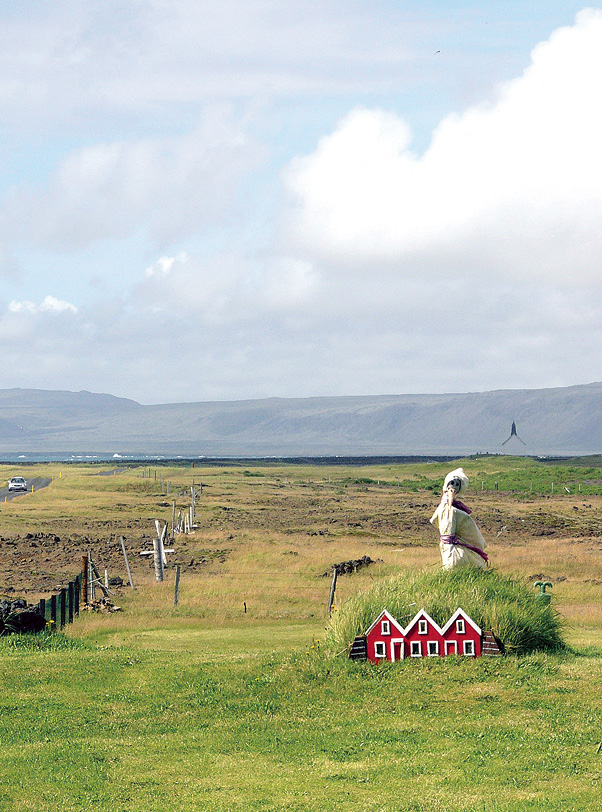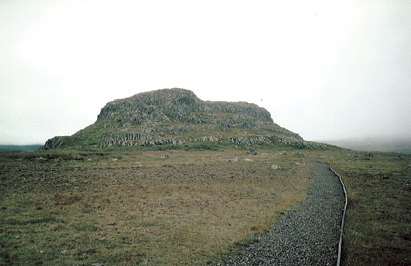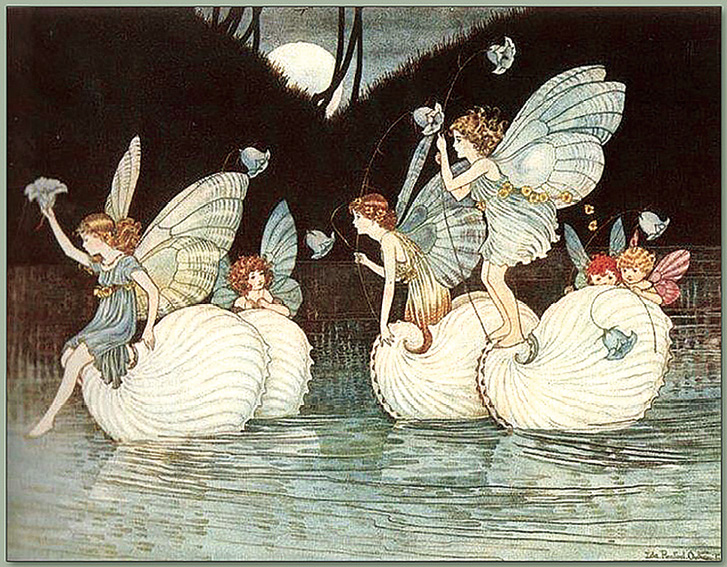Recently I came across an online CBC news article posted in 2014 about a northern Ontario explorer, Bill Steer, who suggested that there may be fairies on the remote Fairy Point (named for fairies) on Lake Missinaibi as depicted in more than 100 pictographs over a rock face of 40 metres.
“Mischievous sprites,” known as Memegwaysiwuk, “live within the crevices along the sheer rock face,” said Steer. “It is those playful, prankish, tiny beings who emerge from their rocky refuge to steal your camping supplies or rock your canoe for no apparent reason.” Steer compared the sprites and fairies to the “wee people” of Ireland and said to be on the lookout for “diminiutive beings linked to the metaphysical” of most Native cultures.
“There are too many legends and beliefs in these little people to ignore the possibility of their existence,” he said.
Steer’s comments echoed those of Norwegian-born author and authority on ‘little people’ Lise Lunge-Larson. In his book Gunflint: The Trail, the People, author John Hendrickson quotes Lunge-Larson as saying, “I think they have withdrawn into an elusive world, parallel but not easily accessible to ours. In our civilized world, most people have lost touch with nature and aren’t capable of seeing the beings that live there.”
In his book, Hendrickson also introduces his readers to Ellefolk, the resident little people who live in the bogs of northern Minnesota. Who are these Ellefolk? According to Henrickson, they originally lived in the bogs of Denmark, moved to Norway, and came to the Gunflint region with some Norwegian immigrants. He writes that Minnesota’s Ellefolk are “light” beings (benign), “not dark” (nasty), and can “travel with great ease through air, fire, wood, water, and stone.”

Then there’s the tale of fairies and leprechauns in Slate River in Ontario across the Minnesota-Ontario border, as told by Patrick “Paddy” MacFarlane (1833-1903) from Ireland. As the story goes, he became known as the “hermit of Slate River.” He resided on the mountainside to the west of the Munro homestead and would stop by there when going to the grocery store.
In his book, Over the Years, author J. Alex Munro writes that MacFarlane would tell “about the fairies or leprechauns that he claimed dwelt on his rock-strewn place,” as well as what he called “fairy races” on moonlight nights. And in winter, MacFarlane saw them from his window riding on snowshoe hares over snow-covered areas, but the fairies vanished when he stepped outside for a closer look.
The Northern Ontario Travel website, features a story about the “Little People of Doghead Mountain” (known as Memegwesiwijiw and translated to “mountain of the little people”) who live at the base of the mountain near Nipigon. Described as tricksters, they are also mischievous and like to tease humans.
Over In Canada’s northern Manitoba, the story goes that the Huldufólk—Iceland’s ‘hidden people’—live in Gimli, the largest Icelandic community outside of Iceland. When Icelandic immigrants came to the Gimli region, the Huldufólk hid in suitcases and came along. For a time, according to folklore, they lived in Gimli store before moving to a school’s attic where they still live.
Speaking of Iceland, experts claim that there are more than 50 different elves that reside in the island country, with the Huldufólk being the most common. Icelanders believe the elves live in caves, hills, canyons, and under/inside large rocks. Elf houses are all over the country, built by Icelanders to advise of the presence of elves in the area. Even the construction of roads are apparently built around known elf buildings.

According to Icelanders, the Huldufólk are invisible supernatural spiritual beings who live in nature in a parallel world (though they can make themselves visible). There’s an elf palace in eastern Iceland (said to be the home of the Elf Queen); an elf cathedral in western Iceland; the rock walls of Asbyrg Canyon, known as the elves’ capital city; an elf museum (where you can learn everything you want to know about elves); and in Iceland’s capital city of Reykjavik, there’s an elf school where people can learn about elves from trained scholars.
Imaginary Tales or Real?
Believers of the small folk world have included authors like C.S. Lewis and Sir Arthur Conan Doyle (Sherlock Holmes fame). And in 1927, when the famous aviator Charles Lindbergh made history with his solo flight across the Atlantic Ocean, he said benevolent small beings helped him navigate. (Lindbergh’s childhood home was in Little Falls, Minn.)
Cultures from around the world have tales and myths about invisible small folk. In England there are fairies known as Brownies, Hobs, Hobgoblins and Cornish Pixies. Grogans, Spunkies and Doonies reside in Scotland. The Irish have Aos Si and Finnish Hiisi. Iceland has 50 different tribes of fairies and elves. Canada’s Indigenous peoples have beliefs in little folk—various spellings include Memegwesi, Mamakwasesak, Mimikwisiwak (little rock people)—that live along riverbanks, rocks, caves, and sand hills by large lakes.
These days, we are hearing from scientists about the concept of “parallel universes,” where perhaps different versions of us exist in those parallel universes (admittedly, it’s a bit complicated for me to completely grasp). But, if parallel universes exist, could the mythical invisible ‘little or hidden folk’ also exist in those other universes?




